B2B SaaS Marketing Case Studies: How We Ramped up SEO, Paid, and Demand Gen Results for 14 SaaS Companies
Last updated: November 23rd, 2023
In our article on why we chose to be a B2B SaaS marketing agency, we lay out the 3 primary reasons why we landed on SaaS as our vertical of focus. The first being that we’ve developed a deep understanding of the common marketing problems that SaaS businesses face.
We describe in the post that the biggest theme we see is a tendency for SaaS marketers to do “tactics without strategy.” As a result, they run into a slough of problems. For example:
- Lagging behind in organic search rankings
- High click costs on platforms like LinkedIn and Facebook
- Hitting ceilings with their Google Ads spend
The core of the problem is usually the same: their tactics aren’t being coordinated to work together in a system. And they haven’t structured their processes in a way that helps them make iterative improvements over time.
This is what led us to develop Predictable Growth, our SaaS marketing strategy for demo and trial based B2B businesses.
In this article, we summarize 14 B2B SaaS case studies where we used this growth strategy to achieve substantial increases in lead generation and revenue for our clients. We’ll cover:
- The exact problems they were struggling with before coming to Powered By Search.
- How we analyzed their campaigns and diagnosed issues.
- The exact strategies we used to solve these problems.
- The results produced from these strategies.
Let’s jump into it.
Table of Contents
Holistic Demand Generation Case Studies
- Growing ARR 50% in 2 Years by Improving Lead Quality and Volume Through Paid Channels and Organic Search for a Landscaping SaaS
- A 68% Increase in Enterprise Sign Ups within 100 Days by Accelerating Google Ads & LinkedIn Ads for B2B Cybersecurity SaaS
- Scaling Enterprise Customer Base With Organic and Paid Media Strategies For a Data Governance SaaS
Paid Media Case Studies
- Growing SQL Volume and Quality Through Facebook Ads For A Restaurant POS SaaS
- Deploying Awareness and Consideration Campaigns to Promote Sales Activity For an EHR Platform
- Scaling Facebook Ads Awareness Campaigns For a GPS Fleet Tracking SaaS
- Increasing Demos by 41% with Paid Media for an RFP Software Solution
- Leveraging Target Account Lists of Competitor Customers to Acquire MQLs with LinkedIn Ads for a Fundraising Software SaaS
- Reducing CAC While Increasing Lead Quality and Quantity Through Google Ads For a B2B Customer Service SaaS
- Reducing Ad Spend While Increasing Sales For a B2B Fitness SaaS
- Reducing Wasted Spend and Driving Down CPA with an Omnichannel Paid Media Strategy for a Master Data Management SaaS
SEO & Content Marketing Case Studies
- Improving SEO ROI By Increasing Rankings For High Purchase Intent Keywords For Expense Tracking SaaS
- Improving Organic Lead Quality and Quantity For a Publicly-Listed Cybersecurity SaaS
- A 9x Year-Over-Year Increase in Organic Traffic by Refreshing Blog Content for ClickFunnels
If you’re a B2B SaaS company wanting to breach your own growth ceilings, schedule a Free SaaS Scale Session to learn about how we can help your business grow through paid media and SEO.
1. Holistic Demand Generation Case Studies
Results achieved from our multi-channel B2B SaaS marketing programs that holistically join Paid Media, SEO, and demand generation efforts.
- Growing ARR 50% in 2 Years by Improving Lead Quality and Volume Through Paid Channels and Organic Search for a Landscaping SaaS
- A 68% Increase in Enterprise Sign Ups within 100 Days by Accelerating Google Ads & LinkedIn Ads for B2B Cybersecurity SaaS
- Scaling Enterprise Customer Base With Organic and Paid Media Strategies For a Data Governance SaaS
1.1 Growing ARR 50% in 2 Years by Improving Lead Quality and Volume Through Paid Channels and Organic Search for a Landscaping SaaS
You can read the full case study here: How We Added Millions in ARR to Structure Studios’ Revenue
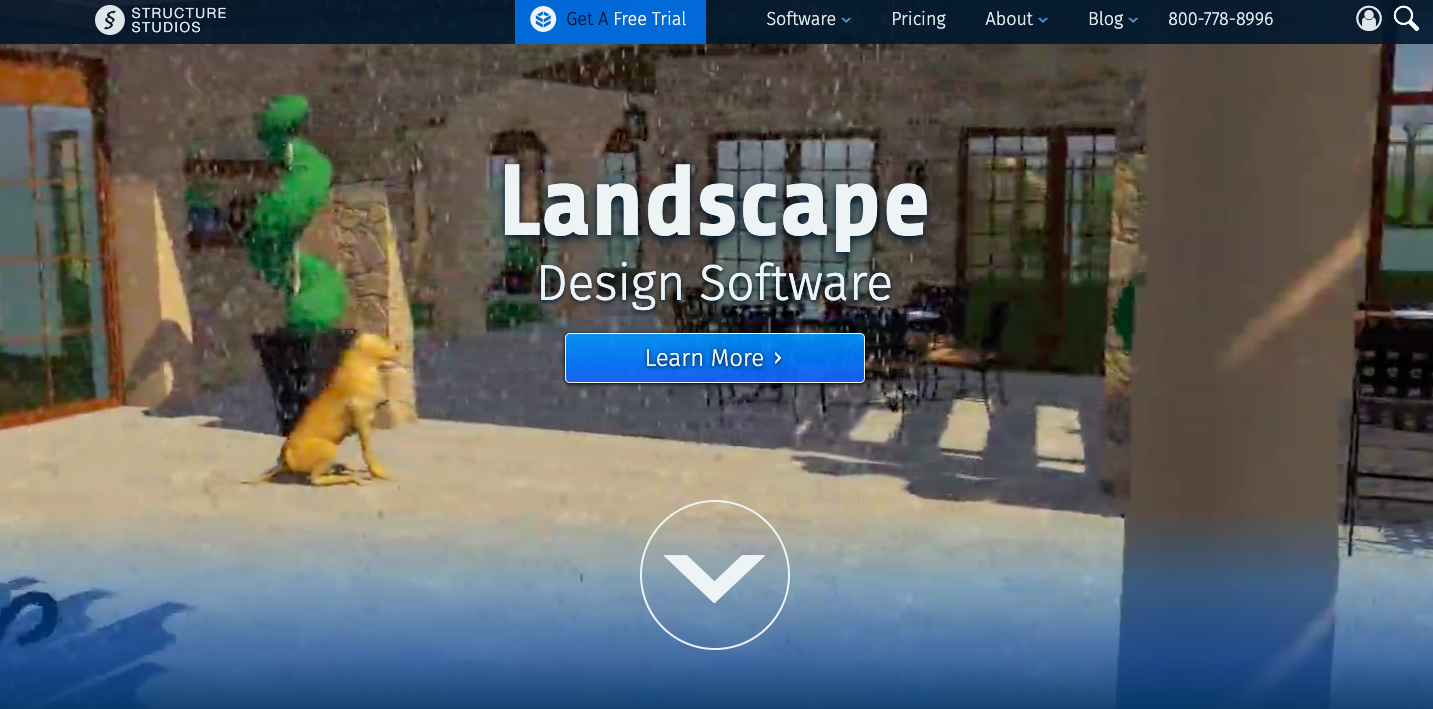
When Structure Studios first approached us, they struggled to acquire customers through paid media and SEO efforts profitably and weren’t sure how to improve their strategy.
Here were just a few specific issues on their radar that caused them to reach out:
- They’d been trying to rank a product page for the keyword ‘landscape design software’ for a year and hadn’t breached page 1 — which they suspected was due to technical SEO issues.
- They’d reached a ceiling with their ad performance through both search and social and thought there was more opportunity there if they could figure out how to improve those efforts.
- They knew they weren’t following tracking and attribution best practices, but didn’t have the time or know-how to get it sorted out.
A deeper analysis following our Predictable Growth methodology also uncovered lead quality challenges.
Their existing strategy consisted of Google Ads aimed at bottom-of-funnel keywords, a couple live Facebook Ads (also with a bottom-of-funnel focus), and partially optimized product pages that weren’t gaining traction in search engine rankings.
Here’s how we tackled these challenges:
- Improved technical SEO by using our content architecture framework to eliminate cannibalization issues. Cannibalization means multiple pages on their site were competing for the same target keyword (‘landscape design software’).
- Added depth to key pages lacking comprehensiveness by describing their prospects’ pain points and how their product helped to solve them.
- Revamped Google and Facebook ads to reach a wider audience, improve lead quality, and add attribution. Specifically, we sorted users into useful categories (e.g., lead, free trial user, purchaser) and defined negative keywords to filter out B2C customers.
- Improved ad messaging by targeting exclusively professional landscapers.
- Implemented Google Display Network to create product awareness with high funnel prospects.
- Boosted conversions from ads by improving content relevancy depending on the prospect’s stage in the buying cycle. For mid and higher funnel prospects, we sent them to landing pages optimized with explainer videos to capture interest. For mid and lower funnel prospects, we provided pain point focused content and introduced them to the client’s solution.
Results Achieved
- Grew ARR by 50% over the course of two years.
- Landscape design product page eventually rose to position 1 in Google search results and organic traffic also saw a significant increase.

1.2 A 68% Increase in Enterprise Sign Ups within 100 Days by Accelerating Google Ads & LinkedIn Ads for B2B Cybersecurity SaaS
When this client came to us, they struggled with low demo volume (sometimes just 1-2 demos per month) and wanted to build a more effective marketing strategy to predictably generate more qualified demos each month.
As an enterprise solution, their buyer journey is often several months long and requires buy-in from multiple stakeholders.
At the time, they were running various disjointed marketing campaigns, though as none of them worked together, they weren’t seeing a great ROI from any of them.
To solve this, we focused primarily on Google ads (Search and Display) and LinkedIn ads, paired with an SEO and content program.
Here’s the approach we took to solve these problems:
- Improve lead quality by revising keyword targeting & implementing Gmail filter for HubSpot forms.
- Ongoing and consistent review of search query reports to negate irrelevant queries.
- A/B testing dedicated PPC landing page vs. website landing page for API security, and analyzing heat map data to identify opportunities for conversion rate improvement.
- Importing lead audience from Hubspot to leverage for demo remarketing.
- Refining targeting in LinkedIn Ads to improve accuracy of ICP targeting.
- SEO scorecarding & technical implementation to improve visibility in search.
- Organic content optimization mapped to each stage of the buyer journey.
Results Achieved:
In the first 100 days of our engagement:
- They saw a 68% increase in Sign Up volume quarter-over-quarter
- MQL disqualification rates decreased from 84% to 18%.
- Closed first PPC-attributed deal within a 2 month buying cycle (normally 6-9 months).
1.3 Scaling Enterprise Customer Base With Organic and Paid Media Strategies For a Data Governance SaaS
This data governance SaaS is in a highly competitive market, up against large Cloud 100 organizations, and they came to us wanting to aggressively scale their enterprise customer pipeline.
Their initial marketing strategy consisted of various random acts of marketing (some content marketing, some paid media, etc.), but these marketing channels didn’t work together to deliver a frictionless buyer experience.
As this client sells software to enterprise customers, the average buying cycle is typically several months long and highly complex, involving multiple stakeholders and executives. This meant that any friction in the marketing funnel could easily cause the prospect to lose interest.
To solve this, we implemented a holistic demand generation strategy to consistently attract, engage, and nurture prospects across the entire marketing funnel.
Specifically, here’s an overview of the strategy we implemented:
- Targeted high purchase intent keywords to attract only right-fit traffic. Previously, they were driving topically relevant traffic, though many of the visitors weren’t qualified prospects.
- Optimized the blog architecture to improve the user experience and help boost average rankings.
- Implemented a LinkedIn ABM campaign that targeted the right people at their ideal companies rather than generic personas. We also remarketed to these people so that our client was top of mind when these prospects were ready to buy.
- Created unique landing pages for data lineage and data catalog keywords to improve conversion rates of captured leads.
Results Achieved:
- Increased share of voice with organic impressions for the brand name growing by 124% year-over-year:
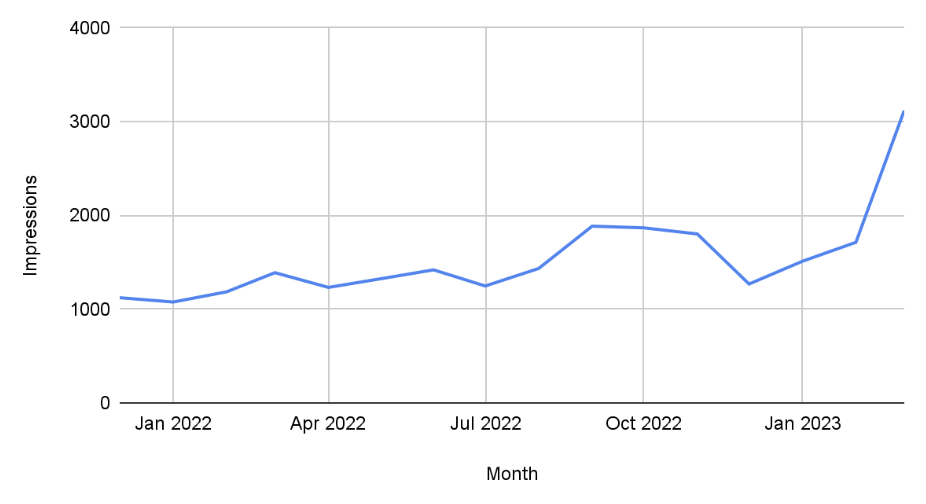
- Achieved 91% more demo requests quarter over quarter and 6x more demo requests year over year.
- Lead conversion rates from Google Ads increased from 3% to 4.2% quarter-over-quarter.
- LinkedIn ABM campaign generated 91 leads in Q1, at a CPL of $38.76.
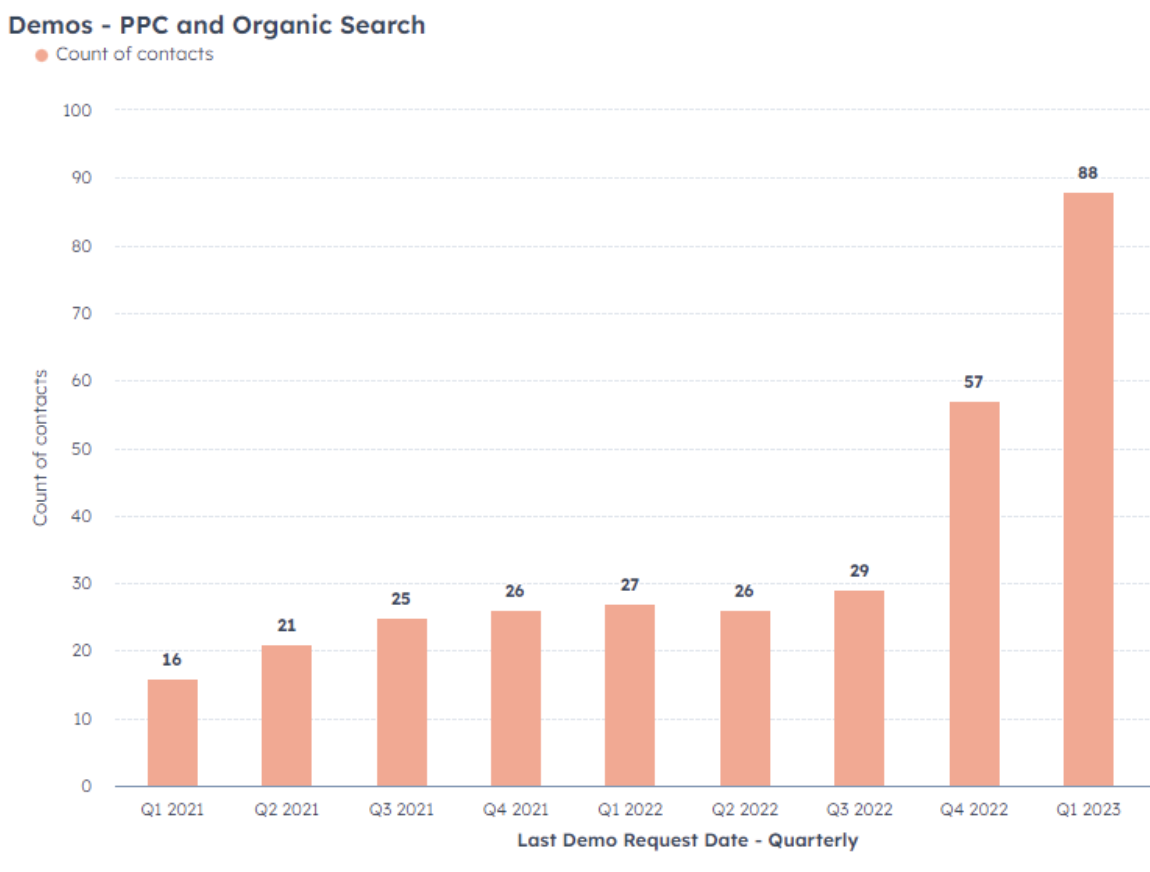
- Increased organic leads by 189% increase in year-over-year organic leads from SEO and content marketing.
- Increased non-branded organic traffic by 92% over a period of 3 quarters.
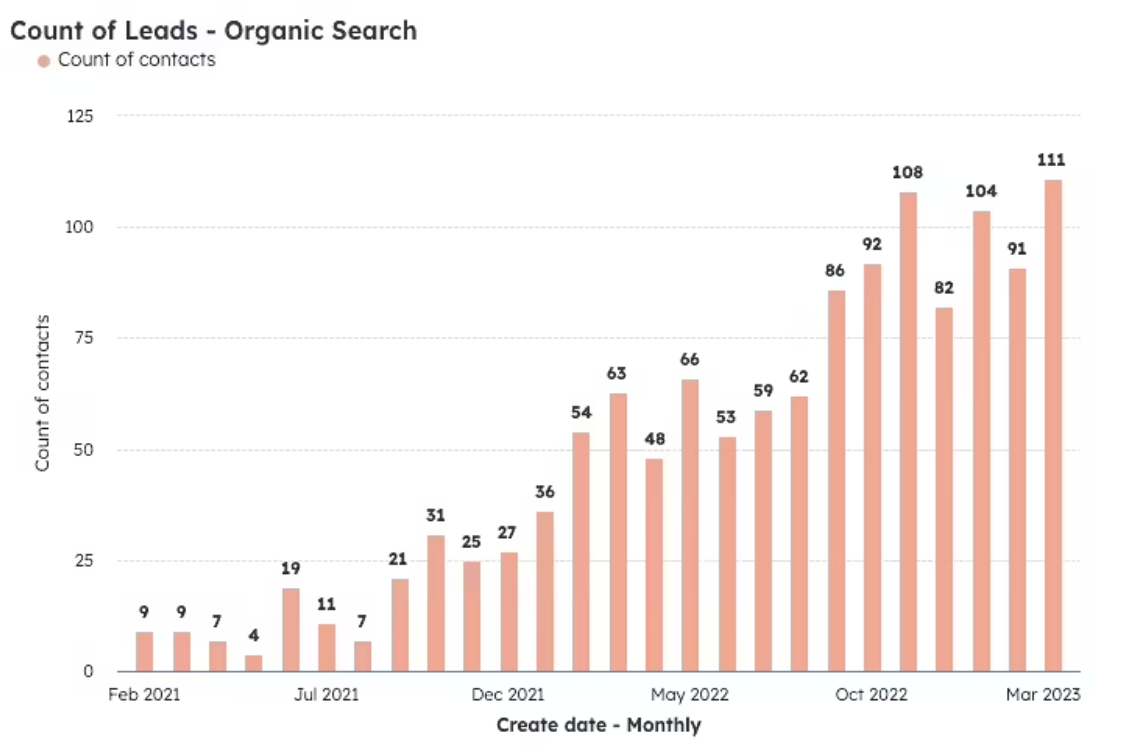
2. Paid Media Case Studies
Results we’ve achieved with Paid Media including Google Ads, LinkedIn Ads, Facebook Ads for search, display, remarketing, and ABM.
- Growing SQL Volume and Quality Through Facebook Ads For A Restaurant POS SaaS
- Deploying Awareness and Consideration Campaigns to Promote Sales Activity For an EHR Platform
- Scaling Facebook Ads Awareness Campaigns For a GPS Fleet Tracking SaaS
- Increasing Demos by 41% with Paid Media for an RFP Software Solution
- Leveraging Target Account Lists of Competitor Customers to Acquire MQLs with LinkedIn Ads for a Fundraising Software SaaS
- Reducing CAC While Increasing Lead Quality and Quantity Through Google Ads For a B2B Customer Service SaaS
- Reducing Ad Spend While Increasing Sales For a B2B Fitness SaaS
- Reducing Wasted Spend and Driving Down CPA with an Omnichannel Paid Media Strategy for a Master Data Management SaaS
2.1 Growing SQL Volume and Quality Through Facebook Ads For A Restaurant POS SaaS
Read the full case study here: How We Grew TouchBistro’s SQL’s to over 135 Demos per Month through Facebook Ads

When TouchBistro came to us a few years back, they’d reached a plateau in their Facebook Ads campaigns (their main paid media channel), and didn’t know how to generate more high quality leads.
Simply increasing ad spend wasn’t a viable option as their ads consistently produced diminishing returns.
After extensive analysis, we discovered they were targeting the wrong user base segment throughout the entire funnel.
While their ad messaging and targeting focused strictly on restaurant owners, the restaurant managers and servers were the ones experiencing the pain points solved by TouchBistro’s product.
In addition, there were some issues with their landing pages, including multiple conflicting calls to action (CTAs), no testimonials and other trust building social proof points, no case studies or customer examples, and exclusively using static content (text and images only).
Here’s the strategy we implemented to solve these problems:
- Improved targeting and messaging by shifting from restaurant owners to restaurant staff, and changed the ad messaging and creative to stand out to servers.
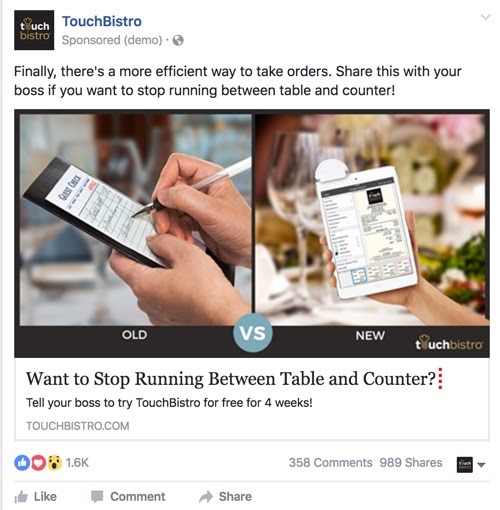
- Improved ad engagement by highlighting the benefits of that solution: eliminating the stressful and exhausting back-and-forth between table and counter, increasing efficiency (more turnover = more tips), and replacing manual order-taking with a digital solution that neither taxes the memory nor requires restaurant employees to decipher one another’s hurried handwriting.
- Optimized landing pages by focusing on one primary CTA as opposed to two equally weighted CTA’s, adding customer testimonials to build trust and credibility, replacing stock images with real images of customers using their product, and implementing explainer videos to provide more engaging and educational content on their landing pages.
Results Achieved:
- Achieved a new record of generating 135 Leads in a single month.
- Significantly increased ad engagement (shares, comments, and likes) as servers interacted with the post.

2.2 Deploying Awareness and Consideration Campaigns to Promote Sales Activity For an EHR Platform
You can read the full case study here: How We Helped PointClickCare Get Over 2000 Leads with LinkedIn Ads
When PointClickCare, an established Electronic Health Record (EHR) platform, first approached us, they were struggling to fill their pipeline with more qualified demos.
As a leading EHR solution, they were evolving rapidly and wanted to play at a higher level, so they wanted to try investing in new channels to generate more qualified leads.
Here’s the strategy we implemented to help them achieve this goal:
- Deployed a combination of static, in-feed, and video ads to ensure target audiences were engaged with minimal ad fatigue.
- Refreshed existing e-books and guides into shorter, goal-oriented, and highly digestible content for easier consumption.
- Leveraged target account lists to convert highly targeted ideal client avatars into MQLs.
Results Achieved:
- Generated over 2,000 LinkedIn Leads in 2 Quarters
- Drove 2063 leads at a cost of only $10 per lead in the highly competitive healthcare niche
- Used LinkedIn Lead Gen ads to convert highly targeted ideal client avatars into MQLs.
- Converted longer content upgrades into short, actionable, goal-oriented, and easy to consume cheat sheets.
- Achieved a 24% opt-in rate to prove high customer-offer fit.
2.3 Scaling Facebook Ads Awareness Campaigns For a GPS Fleet Tracking SaaS
You can read the full case study here: B2B SaaS Facebook Ads Case Study: Scaling MQLs to 60/Month for Titan GPS
Titan GPS provides fleet management solutions for logistics, trucking, construction, and energy industries.
When they came to us, they struggled to make gains in an increasingly competitive market. For example, one of their competitors had recently tripled its Google Ad spend, which caused their average cost per acquisition (CPA) to double.
Therefore, they needed to figure out a different method to profitably acquire customers.
Since Google was quickly becoming a crowded and expensive channel, we decided to expand their PPC efforts to include Facebook as well.
Here’s the exact strategy we executed:
- Leveraged lead magnets and free download offers to drive pipeline related to legal changes to ELD (electronic logging devices) for commercial motor vehicles in USA and Canada.
- Created Facebook lookalike audiences based on existing customers in their CRM (HubSpot) to yield higher quality prospects.
- Deployed Powered by Search’s ‘Who, Why, What’ framework to Facebook ad copy and creative Ad to target specific pain points of target ICP.
- The “why”: “Still using paper HOS logbooks?”
- The “who it’s for”: “Commercial drivers and fleets”
- And the “what”: “Electronic logbook app”
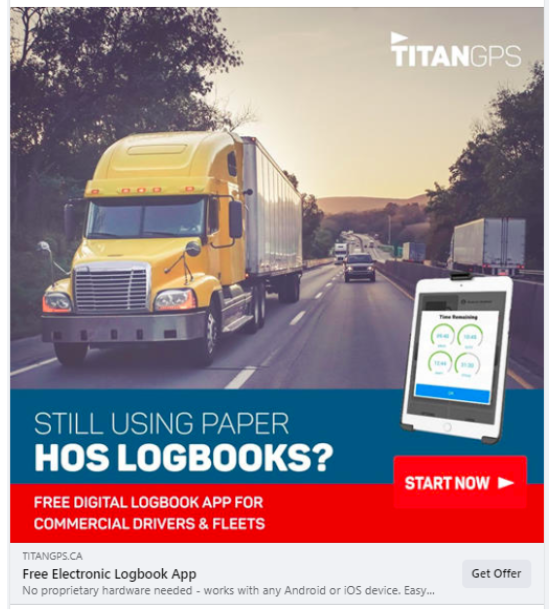
- Deployed Powered by Search’s ‘pro without con’ messaging to bolster communication of prospect pain points, and the benefit of Titan GPS’ solution.
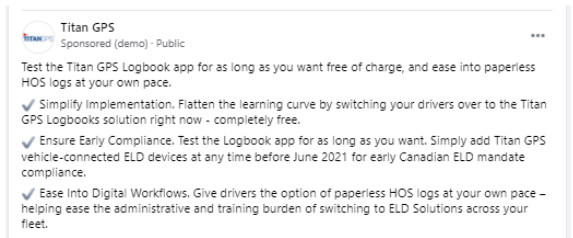
- Optimized dedicated landing page using Powered by Search’s B2B SaaS landing page framework to ensure continuity from Facebook ad engagement to conversion.

Results Achieved:
- Acquired 300 MQLs over a 5 month period from awareness and consideration campaigns to generate pipeline from impacts to changing industry mandates.

2.4 Increasing Demos by 41% with Paid Media for an RFP Software Solution
You can read the full case study here: How We Helped Loopio Increase Demos by 41% Quarter Over Quarter and Achieve Consistent Growth
Loopio, an RFP software solution, wasn’t really stuck when they first reached out to us. Their paid media was performing well enough, but they wanted to scale demo volume.
The problem was that while Google ads had been a great source of high-quality leads, they knew they would soon max out their bottom of funnel prospecting campaigns and needed an alternative strategy to continue scaling.
They also wanted to try some new growth channels.
To solve this, we took an omnichannel approach to their paid media strategy by using a combination of Google ads (Search and Display), Bing ads, Facebook Ads, LinkedIn ads, and YouTube ads.
Here are some details on how we executed this strategy:
- Adopted an omnichannel and full-funnel approach to generating:
- Bottom funnel re-engagement through remarketing
- Demo sign ups for consideration
- ‘First touches’ with prospects to generate awareness
- Deployed explainer video campaigns on LinkedIn Ads, Facebook Ads, and YouTube to drive awareness and consideration.
- Consistently optimized campaigns by A/B testing ad copy, creative, and landing page content.
Results Achieved:
- Quarterly increase in demos booked from Google Ads by 45%
- Quarterly increase in demos booked from LinkedIn Ads by 37%, while driving an 18% reduction in CPA with only a 6% increase in media spend.
- Quarterly increase in demos booked from Bing Ads by 21%
- 13 webinar registrations at a CPA of $139 in a flighted short-term LinkedIn Ads campaign.
2.5 Leveraging Target Account Lists of Competitor Customers to Acquire MQLs with LinkedIn Ads for a Fundraising Software SaaS
When we got started, this fundraising SaaS was already targeting a list of ideal customers but needed help figuring out how to profitably reach and convert these prospects to profitably generate MQLs and SQLs.
Here’s the strategy we used to help them solve this challenge:
- Defined a target account list from a list of a key competitor’s potential customers, plus our client’s relevant contact lists in their CRM (HubSpot).
- Developed targeting, messaging, and ad copy for LinkedIn Ads campaigns to reach relevant job titles at target account list organizations and engage with ads that addressed the gaps and unresolved pain points of the competitor’s solution (in this case, security & data transparency issues, limited software functionality compared to our client’s solution).
- Launched LinkedIn Lead Ads to promote relevant gated resources (e-books, cheat sheets, infographics) for collecting contacts.
- Leveraged remarketing campaigns to nurture contacts with additional content and pitched bottom-funnel prospects to book a demo.
- Implemented Powered by Search’s competitor comparison landing page playbook (and again leveraging remarketing to nurture visitors down the funnel.)
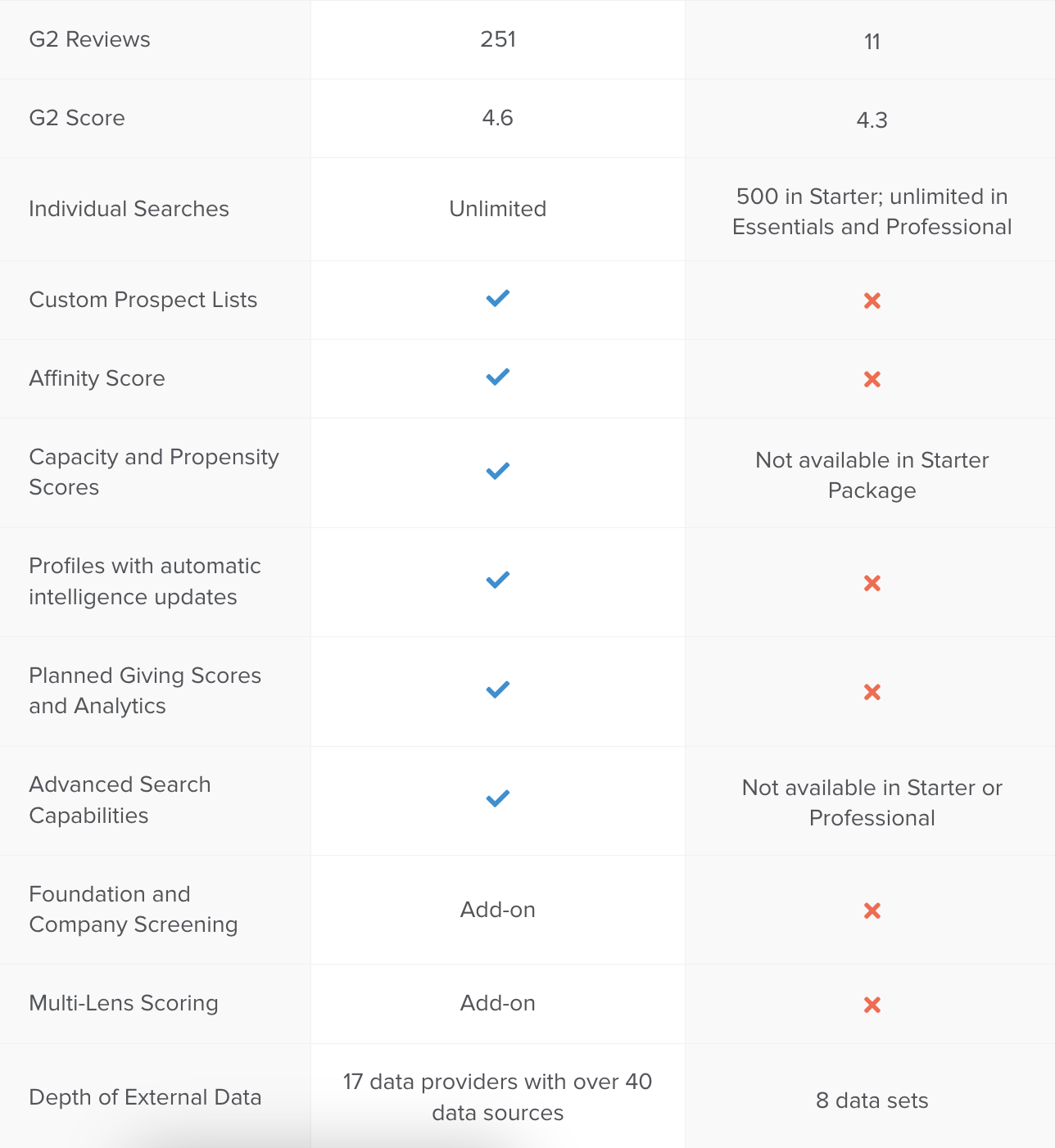
Results Achieved:
- Reduced CPA to just $40 with their LinkedIn Ads prospecting campaign which generated over 59 leads (4-figure ACV).
2.6 Reducing CAC While Increasing Lead Quality and Quantity Through Google Ads For a B2B Customer Service SaaS
This team came to Powered By Search because they wanted to reduce their cost per SQL and increase the quality and quantity of trial users at the same time.
Achieving these goals simultaneously is challenging, but with shifting budgets, they had to figure out a way to reduce CAC and make it work.
We decided to focus on Google ads (Search and Display), and here’s the strategy we implemented:
- Restructured campaign locations and languages, added new ad variations, tested bid strategies, and optimized lead quality.
- Implemented agile performance forecasting to align on accurate Cost/SQL goal, adjusting from €450 > €400-550 > €375 > €260 over a 90 day period to refine success criteria and campaign activities based on holistic pipeline performance.
- Implemented our Hypothesis Testing Log for iterative testing to increase performance within CAC targets.

Results Achieved:
- Reduced cost per SQL by 38% from €643 to €396 in under 90 days.
- 72% improvement in average conversion rate from 2.4% to 4.2% quarter-over-quarter, exceeding the SaaS industry benchmark average of 3.75%.
- Exceeded quarterly SQL target by 17% (704 actual vs. 600 target).
- Exceeded quarterly customer target by 11% (164 actual vs. 148 target).
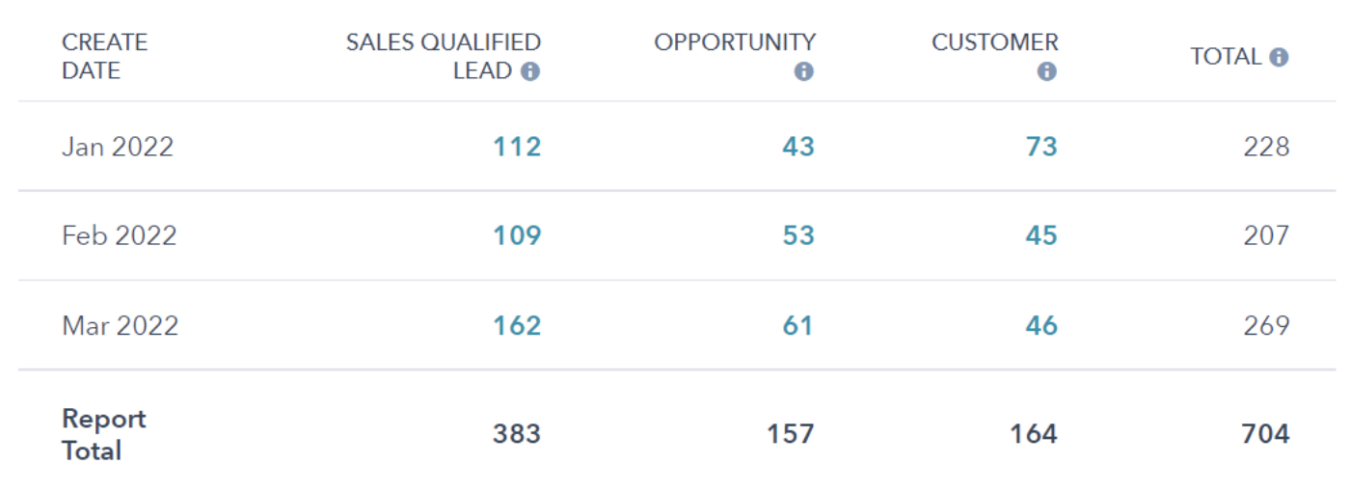
2.7 Reducing Ad Spend While Increasing Sales For a B2B Fitness SaaS
You can read the full case study here: B2B SaaS Case Study: How We Improved Sales by 5% with 30% Less Ad Spend
This client was running Google and Facebook ads before coming to Powered By Search, but they weren’t profitably acquiring customers with either channel.
In fact, they were spending 180% of their PPC budget and couldn’t pinpoint where the budget was being wasted.
They’d been working with an agency that “set it and forgot it,” and now they needed to figure out where the strategy went wrong.
After analyzing their Google Ads strategy, we discovered they were running outdated bidding strategies and wasting a lot of money displaying prospecting ads to existing customers.
Their Facebook ads weren’t converting very well either, and we discovered that their ad campaigns were structured based on audiences, rather than objectives — an approach more common in eCommerce.
To solve these issues, here’s the strategy we implemented:
- Re-allocated budget away from prospecting ads to existing customers with negative keywords and audience exclusions (based on Salesforce active user lists).
- Restructured Facebook Ads campaigns to focus on objectives versus audiences.
- Pruned non-performing campaigns on Google Ads and Facebook ads that were spending money but not generating conversions.
Results Achieved:
- Reduced wasted spend on Facebook ads campaigns by 36%
- Reduced wasted spend on Google Ads campaigns by 23%
Here you see the blue line (clicks they were paying for) drop dramatically, while the red line (conversions) remained steady:

2.8 Reducing Wasted Spend and Driving Down CPA with an Omnichannel Paid Media Strategy for a Master Data Management SaaS
This B2B SaaS was struggling to efficiently drive results from its paid media campaigns.
Like many of the other case studies here, they were overspending on campaigns and had a low conversion rate of about 1%.
In addition, the prospects that did sign up for demos were usually unqualified, suggesting their ad targeting was poor. In fact, many of the leads signing up for demos were students rather than enterprise buyers!
Unfortunately, they couldn’t figure out why their ads weren’t performing because they were using fragmented data to analyze campaigns, and their reporting was often inconsistent.
We ultimately decided to take an omnichannel approach that focused on Google ads (Search & Display), Bing ads, LinkedIn ads, Facebook ads, and Twitter ads. Then, to solve their problems, here’s the strategy we implemented:
Then, to solve their problems, here’s the strategy we implemented:
- Restructured and re-configured inherited campaigns to reduce wasted spend and double-down on high performing keywords, ad copy, creative, and offers.
- Continuously tested ad creative, ad copy, and lead magnets across all paid channels.
- Ongoing optimization of audiences on LinkedIn and Facebook from lookalikes, exclusion audiences, and target account lists. Leveraged third party solutions such as Clearbit for improving Facebook audience targeting.
- Collaborated with the client team to develop high-converting creative and lead magnets to drive MQL performance on Facebook and LinkedIn. We also refreshed and hyper-targeted offers to reduce audience fatigue and stand out from generic competitor efforts.
Results Achieved:
- Reduced average CPA for Google Search campaigns by 64% quarter-over-quarter from $1,415 to $510
- Month-over-month conversions increased by 127%, with an increase of 181% in net MQLs across all paid channels in the first 100 days.
- Increased conversion rates on the website from paid traffic by 200% quarter-over-quarter.
- Reduced Linked Lead Ads CPA for prospecting campaigns by 60-70%, quarter-over-quarter.
- Drove 173 MQLs (48% of the total MQL goal for all paid channels) in a single quarter with Facebook Ads.
- Improved omnichannel efficiency by leveraging Twitter Ads with $0.18 CPC, driving 66k clicks and nearly 800k impressions.
3. SEO and Content Marketing Case Studies
Results we’ve achieved for our B2B SaaS clients with SEO and Content Marketing.
- Improving SEO ROI By Increasing Rankings For High Purchase Intent Keywords For Expense Tracking SaaS
- Improving Organic Lead Quality and Quantity For a Publicly-Listed Cybersecurity SaaS
- A 9x Year-Over-Year Increase in Organic Traffic by Refreshing Blog Content for ClickFunnels
3.1 Improving SEO ROI By Increasing Rankings For High Purchase Intent Keywords For Expense Tracking SaaS
Read the full case study here: SaaS SEO Case Study: Increasing Hurdlr’s Google Rankings 70% for 21 Strategic Keywords
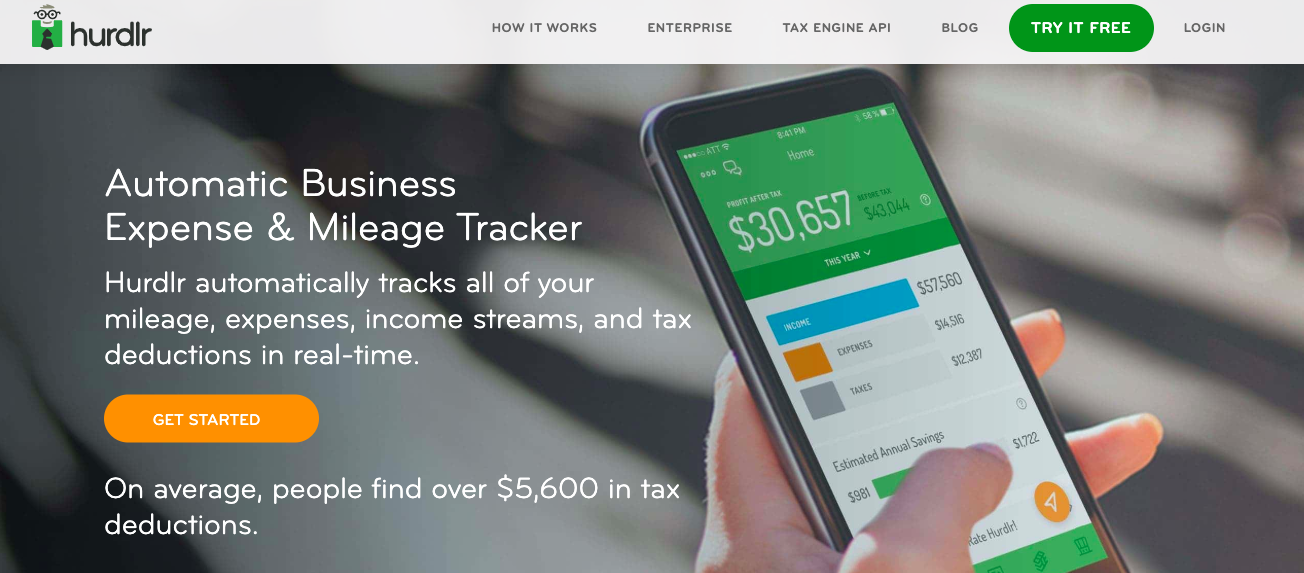
Hurdlr, an automatic business expense and mileage tracking app, approached us because their SEO and traffic was flatlining.
Their talented in-house team had already done a great job building a solid foundation, but they were beginning to feel stuck and didn’t really know how to keep growing.
Specifically, they wanted to improve the following metrics:
- Conversions through their inbound marketing efforts
- Rankings for some of their highest value keywords
- The proportion of site visitors who were closer to the purchase stage
After analyzing their content strategy, we noticed they primarily targeted top of funnel topics that were only indirectly related to their SaaS product. This was the root cause of the low conversions.
We also noticed that they could improve the content for product pages targeting critical keywords.
Here’s an overview of the strategy we implemented to help them achieve these goals:
- Identified the highest value keywords targeting bottom of funnel visitors with high purchase intent. Then, we either updated existing content targeting those keywords or created net new content targeting those keywords.
- Updated product pages for critical keywords. We took their original product page and broke it into three separate pages that followed the same format but targeted their own set of specific keywords. Rather than trying to rank for many different keywords with one broad page, tailoring each page to a long-tail keyword improves your chances of ranking. We followed our SaaS website framework, for each product page, and also updated the homepage.
- Improved the technical health of the website by adding links to their new product pages in their header and footer menus, and adding internal links to critical blog articles. We also used canonical tags to reduce the risk of potential duplicate content or cannibalization issues.
Results Achieved:
- Over the next 12 months, we increased their first page Google rankings by 2-3X (blue line) and their position 1-3 rankings by 4X (yellow line).

- 70% increase in average position for the keywords we targeted for them — with 9 of their target keywords having page 1 or page 2 rankings.

3.2 Improving Organic Lead Quality and Quantity For a Publicly-Listed Cybersecurity SaaS
This publicly-listed cybersecurity SaaS was struggling with two issues with their SEO strategy:
- Their organic traffic was beginning to flatline.
- Their current traffic wasn’t converting into customers.
So not only were they failing to increase organic traffic, but the traffic they did have wasn’t delivering an ROI.
We dove into the problem and found technical optimization issues contributing to the traffic flatline. Specifically, they had opportunities to improve their internal link structure and blog architecture.
After analyzing their content, we discovered they were targeting topically relevant keywords, but the content wasn’t targeting keywords their ideal customers would search for. Therefore, it was no surprise they weren’t generating conversions as the traffic they were driving didn’t have the pain points that their product solved.
To solve these problems, here’s the strategy we implemented:
- Improved the blog’s visual format to adopt our blog authority architecture format. This improved the internal link structure and also
- improved CTAs to convert more leads to subscribers, MQLs, and SQLs.
- Identified and updated decaying content so that users and search engines now had a more streamlined journey.
- Improved traffic quality by identifying topics with high buyer intent (even if it meant lower search volume). We also looked at deal pipeline in HubSpot to identify the highest value content on the blog.
- Improved the content quality from generic to expert by tapping into HubSpot, listening to demo calls, and interviewing account executives and product managers as needed.
Results Achieved:
- Generated 52 net-new leads (about 160 form submissions) in 3 months, resulting in about $500k in pipeline opportunity.
- Reduced bounce rate and increased leads by improving the blog structure (adding the end of the post CTA and improving the sidebar CTA).
- Improved average page load speed by 10% and Google Bot activity by 17% and impressions by 14% thanks to technical SEO updates (sunsetting irrelevant content, fixing internal redirections and 404 links).
3.3 A 9x Year-Over-Year Increase in Organic Traffic by Refreshing Blog Content for ClickFunnels
Read the full case study here: How Refreshing Content for ClickFunnels Led to a 9X Traffic Increase for One of Their Posts
ClickFunnels had plenty of content before they came to Powered By Search, but it wasn’t producing as many conversions as they wanted, and their strategy was beginning to flatline.
Their initial approach to improving SEO performance was simply increasing content output.
However, we realized that they had two major opportunities that would help improve the ROI of their SEO strategy:
- Improve content relevancy. Instead of creating content for high volume keywords, they had an opportunity to target more high purchase intent keywords (even if it meant they had lower volume).
- Refresh and prune decaying content that was dragging down the site’s authority.
To solve these problems, here’s the strategy we implemented:
- Defined a collaborative editorial content process that moved away from previous brainstorming/intuition-based decision making to data-driven decision making from reviewing website analytics, conducting comprehensive SEO keyword research, reviewing competitor content, and researching the ICP to define the topics worth writing about to generate engagement and sign-ups.
- Prioritized content refresh opportunities based on analytics data:
- Starting with pieces that had good traffic but low engagement, then refreshing these posts with a more compelling CTA opt-in offer to increase conversion rates.
- Then, refreshing posts that were low in traffic but topically relevant to Clickfunnels’s customers – particularly posts where they could feature and showcase their drag-and-drop, funnel building tools.
- Consolidating or deleting outdated or irrelevant blog posts that drove no traffic or engagement from ICP.
- Applied Powered by Search’s content marketing workflow and content brief process with ClickFunnels’ copywriters:
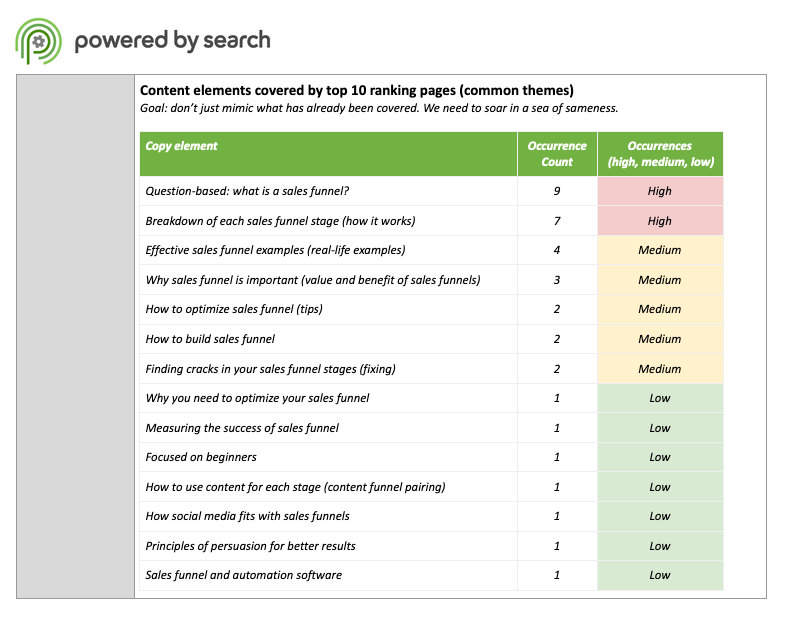
Results Achieved:
- 9x year-over-year increase in organic traffic.
- 863% year-over-year increase in organic sessions to their key blog post on sales funnels.
- Doubled organic keyword visibility volume year-over-year for high priority terms such as ‘types of sales funnels,’ ‘sales funnel structure,’ ‘what are sales funnels?’
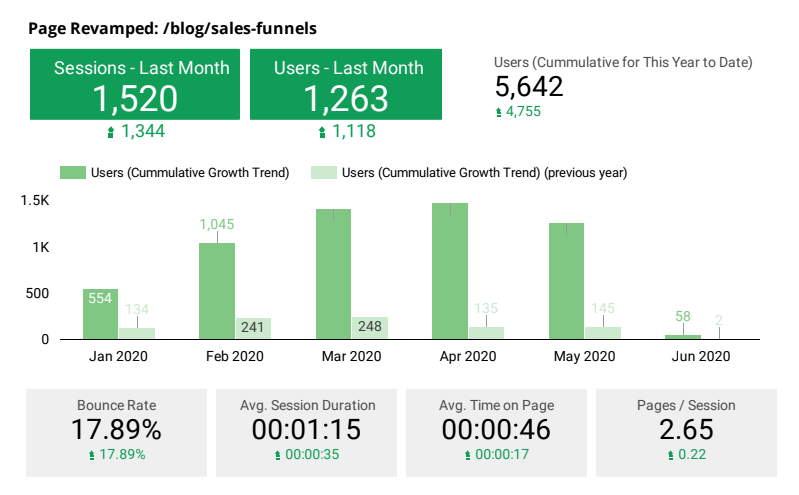
Want to Learn More About Powered By Search and Our Approach to SaaS Marketing?
Hopefully these case studies gave you some ideas on how you can improve your existing marketing channels, and you can use the other resources on our blog to execute the solutions to these challenges.
We continue to develop a number of resources for SaaS marketers and companies to learn and improve their marketing efforts. If you’d like to continue learning, start with exploring our page on all things SaaS marketing strategy.
There you can find articles detailing the systematic processes and tactics we’ve used to grow 30+ SaaS companies — from email marketing and mapping content to your funnel, to foundational principles like positioning and personas.
Or, if you’re a B2B software company and you’d like to learn more about how we can help you grow through paid media and SEO, schedule a free marketing assessment.
What you should do now
Whenever you’re ready…here are 4 ways we can help you grow your B2B software or technology business:
- Claim your Free Marketing Plan. If you’d like to work with us to turn your website into your best demo and trial acquisition platform, claim your FREE Marketing Plan. One of our growth experts will understand your current demand generation situation, and then suggest practical digital marketing strategies to hit your pipeline targets with certainty and predictability.
- If you’d like to learn the exact demand strategies we use for free, go to our blog or visit our resources section, where you can download guides, calculators, and templates we use for our most successful clients.
- If you’d like to work with other experts on our team or learn why we have off the charts team member satisfaction score, then see our Careers page.
- If you know another marketer who’d enjoy reading this page, share it with them via email, Linkedin, Twitter, or Facebook.